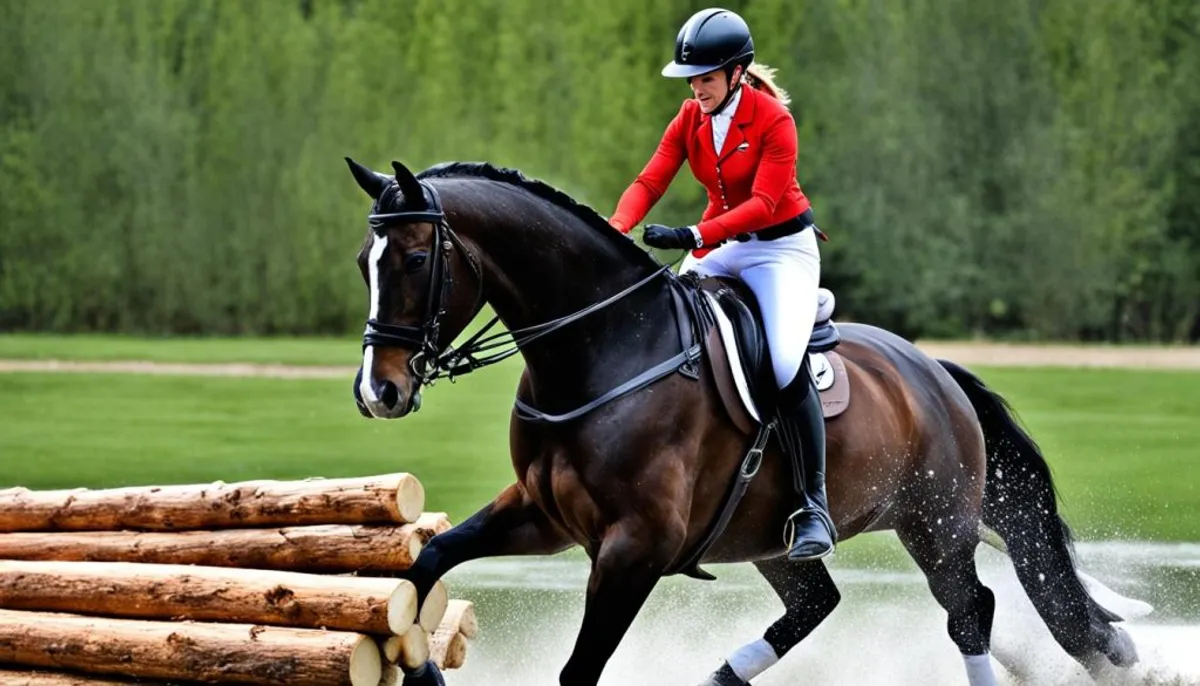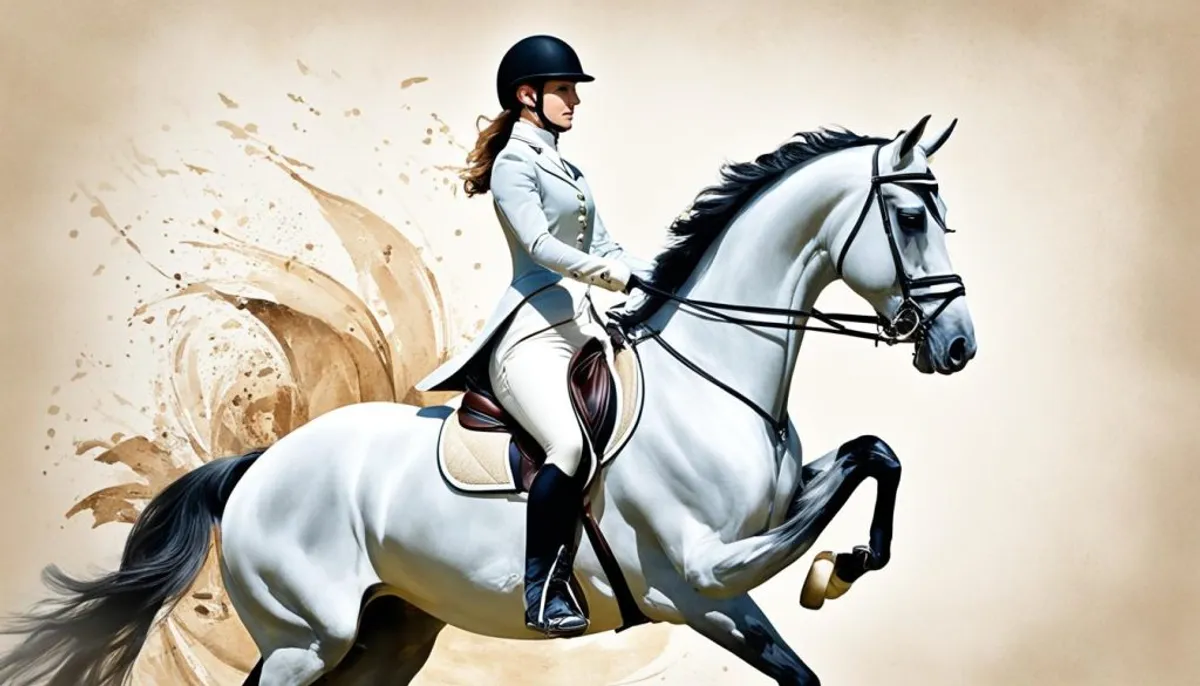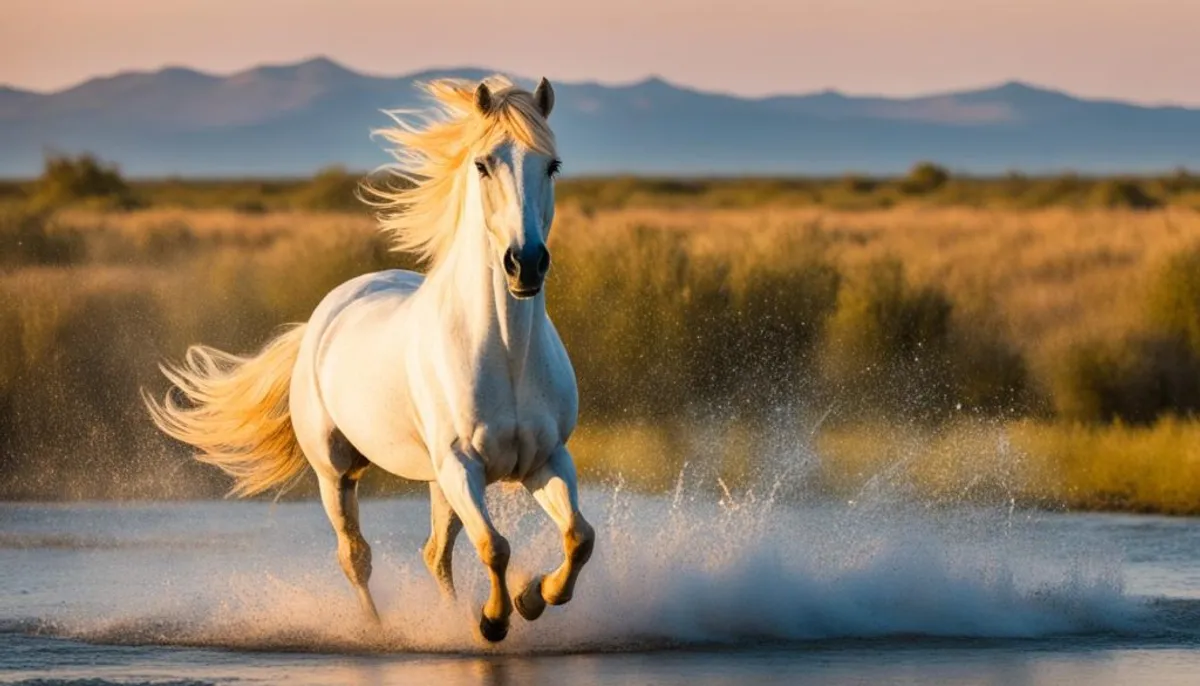Working equitation comes from the traditions of cattle driving. This discipline demonstrates how to manage animals with the horse. It employs ancient methods, showcasing the harmony between man and horse. This union is crucial in a work context where discreet signals and precise movements matter.

Main Ideas to Remember
- Working equitation is a unique equestrian discipline focused on cattle management
- It highlights traditional skills and techniques for working on horseback
- The close collaboration between the rider and the horse is essential for effective herd management
- Working equitation reflects the traditions and heritage of equestrian practices
- This discipline offers a captivating perspective on equitation as a working tool
Introduction to Working Equitation
Working equitation is a unique world. It celebrates the traditions of working with horses. Unlike dressage or , it emphasizes collaboration with cattle.
The more well-known equestrian disciplines impress with their beauty and technique. Yet, working equitation speaks to the deep relationship between man and horse.
An Overview of the Richness of Equestrian Disciplines
Each equestrian discipline has its unique charm. Dressage is a true harmony between rider and horse. Show jumping challenges their speed and agility. Eventing showcases their versatility.
The variety of disciplines amazes with its brilliance and diversity.
Connection to Cattle Working Traditions
Working equitation traces back to methods of cattle work. It tells a story of ancestral collaboration. In these practices, man and horse learn to communicate precisely. They master cattle sorting and liberty training.
This connection to rural tasks distinguishes working equitation. It shows a deep relationship between man, horse, and the rural world.
Classical Riding: An Art of Elegance and Precision
Classical riding is a discipline that emphasizes elegance, precision, and harmony. It creates a true dance between rider and horse. This is seen through subtle communication and controlled movements.
Dressage: The Dance Between Rider and Horse
Dressage is central to classical riding. It aims to build a relationship based on trust and understanding. The rider and horse communicate through light aids for precise and elegant movements.
Show Jumping: Speed and Agility
In show jumping, horses and riders demonstrate their speed and agility. Together, they clear obstacles of varying heights. The rider guides their horse with finesse and coordination through the challenging course.
Eventing: Testing the Horse's Versatility
Eventing tests many aspects of the rider-horse duo. It includes dressage, cross-country, and show jumping. The rider must demonstrate a wide range of skills, and the horse its versatility and robustness.

Classical riding is more than just a sport; it is an art where the rider and horse harmonize. Whether in dressage, show jumping, or eventing, the connection between the two is clear. It showcases their complicity and talent.
Western Riding: The Heritage of Cowboys
Western riding, also known as cowboy riding, originates from the traditions of American cowboys. It is a unique style based on cattle work. It also includes artistic aspects in certain disciplines.
Reining: The Artistic Expression of Western Riding
Reining is considered the most “artistic” of western riding. Riders and their horses perform rapid figures with precision and fluidity. They must execute sudden stops, tight turns, and quick departures. This creates an elegant and synchronized performance.
Barrel Racing: A Race Against Time
Barrel racing is a speed race in a cloverleaf arena. Riders and horses must navigate three barrels quickly and accurately. The speed, the horse's agility, and the rider's ability to handle tight turns are crucial for winning.
Roping: Capturing Cattle with Skill
Roping consists of several events, including calf roping and team roping. These events showcase the skills of cowboys in capturing cattle with a lasso. They require precision, speed, and coordination. These events often replicate cattle work.
Western riding is a vibrant heritage of cowboys. These traditions have evolved into various fascinating disciplines. They skillfully blend cattle management with art and sport.
Working Equitation: Mastering Cattle Management Techniques
Working equitation has its roots in ancient practices. These involve assisting with cattle work. Cattle sorting and liberty training are crucial in this discipline.
Cattle Sorting: A Complex Dance Between Rider, Horse, and Herd
Cattle sorting requires perfect understanding between the rider, their horse, and the animals to be sorted. This complex dance demands fine communication without words. Each element plays a key role. The sorting horses, skilled and dedicated, anticipate the movements of the cattle.
Liberty Training: Subtle Communication Without Reins
Liberty training illustrates a deep communication, without bridles or reins. This highlights the trust and understanding between the rider and the horse through non-verbal signals. Considered a true form of art, this discipline showcases the splendor of a perfect understanding between man and animal.
In working equitation, whether sorting cattle or training at liberty, the key is to have good technique and a strong connection with one's horse. This also requires fine communication and sincere trust.
Equestrian Sports: Pure Excitement
Equestrian sports offer a wide variety of excitement and action. Polo, horseball, and endurance are good examples. Each of these sports brings challenges, techniques, and a lot of emotion. Let's explore together the exciting world of these sports.
Polo: A Frenzied Race on the Field
Polo is a sport where two teams of riders compete to score goals. They use mallets to hit a ball. This game combines speed, precision, and strategy. The alliance of the rider's elegance and the horse's power makes it a spectacular sport.
Horseball: The Union of Rugby and Equestrianism
Horseball is unique, a mix of equestrianism and rugby. Players must pass a ball while performing acrobatics. It is a challenge for riders as it requires strength, agility, and teamwork.
Endurance: The Long-Distance Challenge
Endurance tests the stamina of the horse and rider. They must cover distances of up to 160 kilometers. This event showcases the importance of the relationship between the rider and the horse, trust, and teamwork.
| Discipline | Characteristics | Major Challenges |
|---|---|---|
| Polo | Fast and spectacular equestrian sport | Speed, precision, strategy |
| Horseball | Mix of rugby and equestrianism | Acrobatic equestrian techniques, teamwork |
| Endurance | Long-distance event | Stamina, effort management, horse care |
Equestrian sports offer unique experiences to discover. From fast polo to acrobatic horseball, they allow riders to explore their capabilities. Each discipline brings its share of challenges and emotions to be fully experienced.
Camargue Riding: A Centuries-Old Tradition
Camargue riding comes from the Camargue region. It is a form of riding focused on cattle work. The horse is vital for the gardians, who manage the herds in the vast areas of the Rhône delta.
The Symbiosis of the Gardian and Their Horse
The gardians need their horses for their work. They know their horse very well. They communicate subtly. This creates an incredible harmony between man and animal.
Together, they can move among the bulls. Their agility and complicity are exceptional.
Valuing Traditional Equestrian Techniques
To preserve this tradition, competitions in working equitation have been created. They highlight the techniques of the gardians and other riders. You can see Camargue riding, Doma Vaquera, Portuguese riding, and western riding.
These competitions combine sport and culture. They celebrate unique equestrian traditions.

Camargue riding is a very ancient tradition. It shows the strong bond between the gardian and their horse. This bond is crucial in the natural environment of the Camargue.
Through competitions, these practices are perpetuated by passing them on to younger generations.
The Art of Man-Horse Collaboration
Working equitation demonstrates how man and horse can work together as a team. This is seen in places like ranches or in competitions. Riders and horses learn to manage cattle by being subtle, precise, and observant. They anticipate the movements of the cattle, communicate silently, and work in perfect harmony.
Essential Skills for Cattle Work
These unique skills enable riders and their horses to work well with cattle:
- Anticipation of the herd's movements to guide them gently
- A subtle communication between rider and horse, without using reins
- The ability to work in perfect symbiosis, reacting in a coordinated manner
- A keen sense of observation to read the signals of the cattle and respond accurately
The collaboration between man and horse is key to effectively carrying out cattle work. This includes sorting, gathering, or moving the herd. It is an art that combines equestrian skill with knowledge of animal behavior.
Conclusion
Working equitation highlights key skills for managing cattle and communicating with horses. It recalls the equestrian traditions of the world. It is a discipline that blends sport, history, and ancient know-how. Thus, it offers riders a rich and varied equestrian experience.
Events like reining, barrel racing, or roping stem from western riding. They showcase the heritage of cowboys and their skill with cattle. Camargue riding continues a centuries-old tradition. It highlights the strong bond between the gardian and their horse, perfected for traditional work.
Working equitation goes beyond the sporting aspect. It emphasizes the collaboration between man and animal, which is so important in cattle work. This special discipline represents a rich cultural and equestrian heritage. It is both rooted in history and looking towards the future.
FAQ
What is working equitation?
Working equitation comes from ancient methods of cattle management. It teaches riders how to effectively direct cattle. It also shows how man and horse can work together.
How does working equitation differ from other equestrian disciplines?
This discipline has different roots. It focuses on herd management and working skills. In contrast, dressage and show jumping showcase the elegance of the horse, while western riding reflects the customs of the West.
Each has its specific techniques and unique objectives.
What are the main disciplines of classical riding?
Classical riding includes dressage, show jumping, and eventing. These are sports where the rider and horse must be well coordinated. They highlight communication between them and their agility.
What are the flagship disciplines of western riding?
In western riding, there are reining, barrel racing, and roping. Reining requires elaborate movements at high speed. Barrel racing is a race against the clock around barrels. Roping showcases the traditional skills of cattle capture with a lasso.
How does working equitation highlight the collaboration between man and horse?
Working equitation celebrates the partnership between rider and horse. They learn to anticipate the actions of the cattle and communicate without words. This strengthens their teamwork and harmony.
What is Camargue riding and how is it related to working equitation?
Camargue riding is a shepherd's riding based on collaboration with horses. It has existed for centuries in the Rhône delta. Working equitation events often showcase these traditions.
What are the main equestrian sports other than working equitation?
Polo, horseball, and endurance each bring something different to equestrian sport. Polo is a fast sport where teams score goals by running across the field and hitting a ball.
RelatedRelated articles



